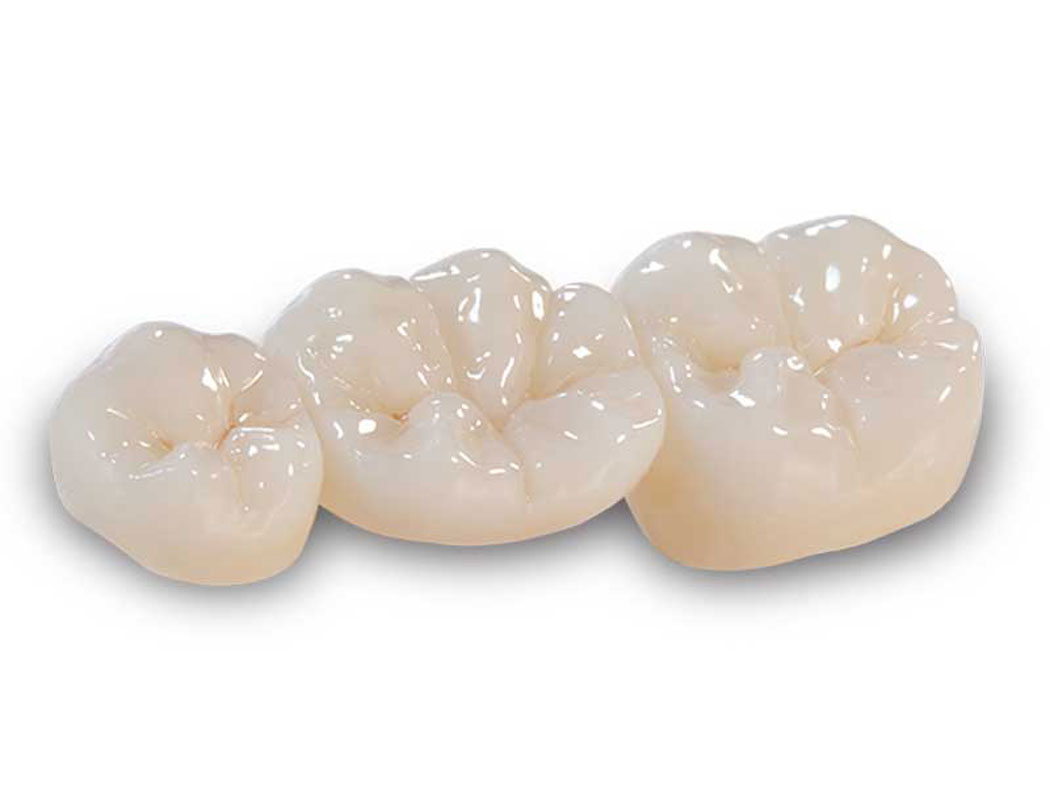
Zirconia
The zirconia used in dentistry is zirconium oxide which has been stabilized with the addition of yttrium oxide. The full name of zirconia used in dentistry is yttria-stabilized zirconia or YSZ.
The zirconia substructure (core) is usually designed on a digital representation of the patient's mouth, which is captured with a 3d digital scan of the patient, impression, or model. The core is then milled from a block of zirconia in a soft pre-sintered state. Once milled, the zirconia is sintered in a furnace where it shrinks by 20% and reaches its full strength of 850MPa to 1000MPa. The zirconia core structure can be layered with tooth tissue-like feldspathic porcelain to create the final color and shape of the tooth. Because bond strength of layered porcelain fused to zirconia is not strong, "monolithic" zirconia crowns are often made entirely of the zirconia ceramic with no tooth tissue-like porcelain layered on top. Zirconia is the hardest known ceramic in industry and the strongest material used in dentistry. Monolithic zirconia crowns tend to be opaque in appearance with a high value and they lack translucency and fluorescence. For the sake of appearance, many dentists will not use monolithic crowns on anterior (front) teeth.